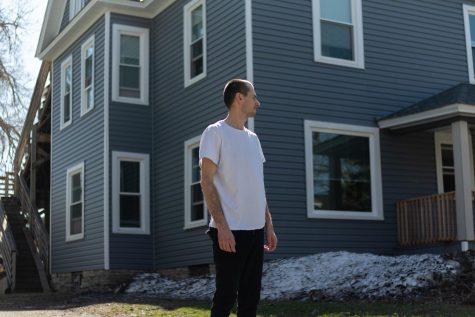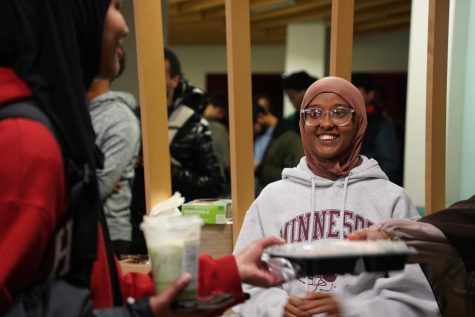Acts of Kindness at the University of Minnesota (AoK), a student organization launched this semester, aims to promote a stronger community on campus through events focused on acts of kindness.
The founder of AoK, third-year student Stormy Pierce, created the club after being inspired by a video created by Oregon-based organization Wildly Kind, which also focuses on doing acts of kindness.
“I wanted to try and find something that helps challenge my mental health, and I find it easier to do things for other people than it is to do for myself,” Pierce said.
After deciding to start AoK, Pierce said she contacted Wildly Kind about her idea and potential involvement within the organization. After back-and-forth conversations with Wildly Kind, who were unable to help due to their location, Pierce created the AoK Discord server and promoted it on social media.
Fourth-year student Lydia Prueher, who is the secretary of AoK, joined the server after seeing promotions about it on a University-based group Snapchat story.
“I was sitting at the break table at my summer pizza job just scrolling through my phone and I was like ‘You know, this looks really cute,’” Prueher said. “I wanted to be involved in some way because it was such a moving idea, something as simple as doing nice things for other people.”
Ten members currently comprise the AoK board, including Pierce and Prueher, who became board members after joining the server and began planning out logistics for the club.
Summer break made planning difficult, as the board members were only able to meet online and the organization did not have much support, such as funding or an established bank account, according to Pierce.
“I’ve never been president of anything before, so there’s been some learning curves with communication, scheduling and funding,” Pierce said. “It’s a pretty great process with the people I have.”
This semester, the organization hosted their Petals and Positivity event, where people received free flowers with positive messages attached to them. They also host online game nights on their Discord server and weekly in-person hangouts.
One of their events coming up is a bake sale on Tuesday, where they plan to sell desserts and stickers. More information about upcoming events can be found on the group’s Instagram page.
Ell Sidla, a second-year global studies student, is a general body member for AoK. Sidla said she joined AoK after visiting their booth at a club fair earlier this semester and loved their mission of spreading kindness.
“It felt like it would be a good place to meet people who are also looking to spread kindness,” Sidla said. “It feels good knowing that it’s a group that’s specifically aimed at promoting kindness and wellbeing.”
Sidla added interacting with other general body members makes her experience in AoK fun, especially during their game nights.
“I’ve been really enjoying their virtual game nights, and it’s a good opportunity to meet people,” Sidla said.
After their Petals and Positivity event, Pierce said she was touched by people who wrote kind messages on a blackboard at the event.
“It was so heartwarming to see the amount of people who also want to engage with being kind and intentionally taking time out of their day to do it,” Pierce said. “I got so happy that I came home and cried. I was so happy that people were really invested in supporting this and wanting to experience kindness.”
Pierce said students face a lot of anxiety and isolation in a post-COVID-19 environment, but having this event was a great way for people to create interactions with others.
AoK set up their event in front of Coffman Union and Prueher said people approached their table with curiosity and surprise as they realized they were able to take flowers without paying.
“People would walk up to the table with their arms crossed and looking around wondering ‘Hey, what do you have going on here?’ And we explained that we’re a club focused on spreading kindness,” Prueher said.
For Prueher, kindness is a way of showing respect to others and to show others that people do care about one another.
“I had a teacher in high school who hated the golden rule, and he’d always say ‘No, treat others the way they want to be treated [instead of how you want to be treated],” Prueher said.
Meanwhile, Pierce believes kindness is a way to validate other people’s experiences and tell others that they are not alone.
“Even when the world makes it hard to believe that, there’s so many good experiences to be had,” Pierce said.


